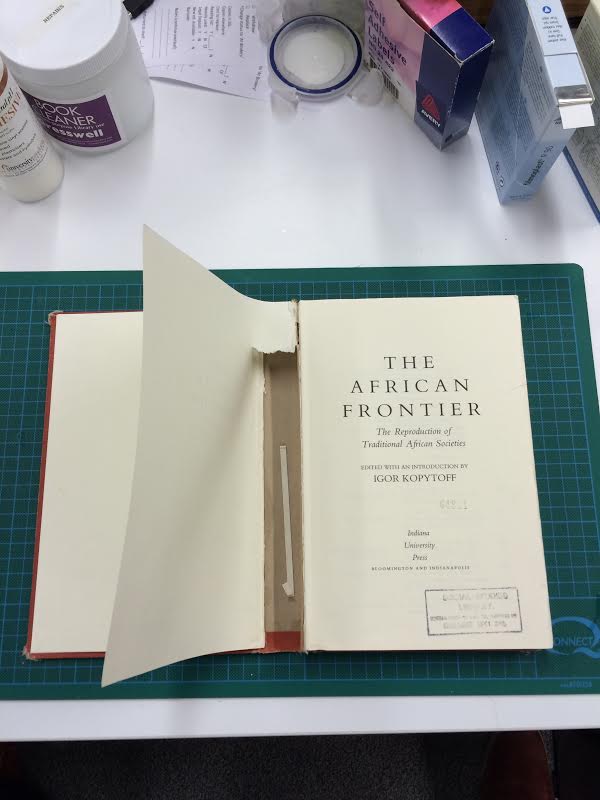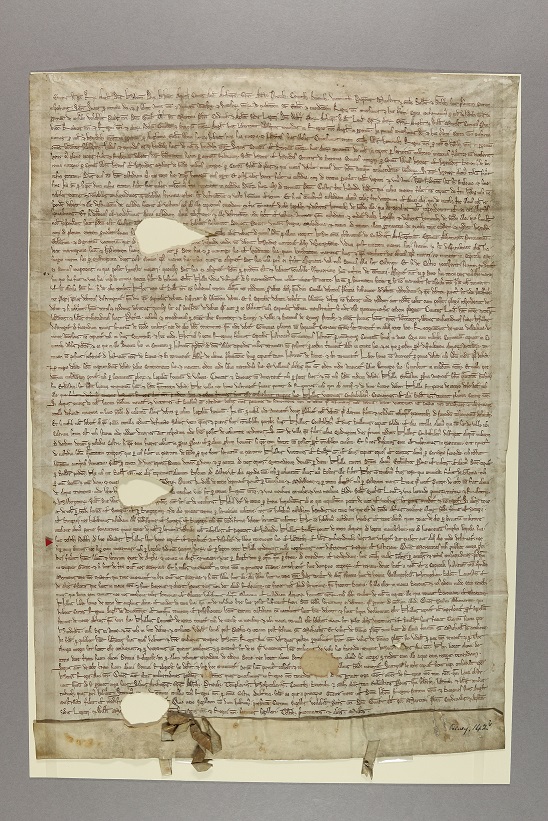The SSL is a busy library. We have around 370,000 books, hundreds of which circulate every day. The more a book is used the more damaged and dog-eared it becomes: pages fall out, pages tear, spines tear, text blocks come loose, hinges detach, covers fall off…. Students pass on their wisdom to their peers in pencil, pen and highlighter (e.g. “Lol!!!”). Sometimes our books are used to mop up coffee or squash insects. We once found some banana peel gluing two pages together. We’ve seen it all.
 Every single line in this entire book has been underlined.
Every single line in this entire book has been underlined.
We have strict rules governing what we repair in-house and what we send to the Conservation team. We do not touch Legal Deposit items or items which are rare, old or hard to replace. Books which are heavily used or on reading lists are usually either sent to the bindery or replaced. But even after sending those items away, we are left with a heavy load of books to repair ourselves. Our repairs are pragmatic, designed to squeeze another few months or years out of a book before it needs to be replaced. It doesn’t have to be beautiful; it just has to work.
In this post I’m going to take you through my repair of one of our books. In an ideal world we would send all of our damaged books to the team of expert conservators I wrote about in my last post, but we have too many books needing attention. I’m quite glad of that, as book repair is one of the most enjoyable and satisfying parts of my job.
This book is in a bad way. The front hinge has come loose, tearing one of the pages. The repair will involve three steps: repairing the hinge, repairing the tear and strengthening the hinge.
https://youtu.be/-8ONTUmuOn0
I started by examining the book to check for any other damage and to make sure that its structure was generally sound. There is no point in carrying out a repair if the book won’t be able to return to the shelves afterwards. Satisfied that I could get this book back into usable condition, I attached some linen hinging tape to the text block. I folded the tape in half and attached it with the hinge facing out, which allows the spine to flex in order to accommodate the opening and closing of the book. I applied a small amount of glue to hold the ends of the tape together before pressing the spine against the tape and smoothing it together from the outside.
I repaired the tear using Hayaku paper, an acid-free tape with a water-activated adhesive. I cut enough to cover the tear and moistened it with a paint brush. When dry, it forms a bridge between the two sides, holding them together.
https://youtu.be/qnKgkaiMarc
Finally, I attached linen hinging tape to further strengthen the hinge.
The book is now back out on the shelves. Although it’s not as good as new, it’s good enough to last a while longer. Perhaps next time it gets damaged we’ll have to send it to the great library in the sky, but for now it’ll live to be read another day.
Thanks to Clare Hunter for taking the videos.





Recent Comments